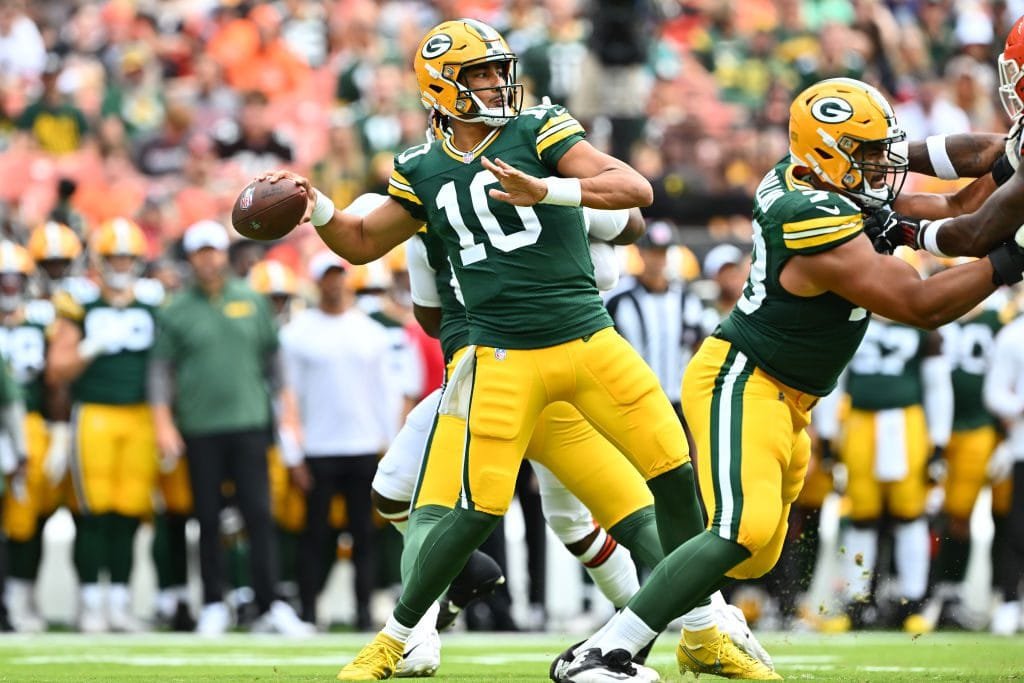Introduction
The Green Bay Packers are one of the oldest and most popular teams in the USA professional sports leagues. A unique phenomenon in the contemporary sports industry, Green Bay Packers is not only the only publicly owned nonprofit franchise in the major league professional sports in the United States of America but also the epitome of middle America. With their roots starting nearly one hundred years ago, the Packers have entertained and inspired fans across the generations through their commitment to the community and the fire of a competitor.
Why is Green Bay called the Packers?
Currently, the name “Packers” has become an inseparable part of Green Bay and its football team. But why is a small city in northeastern Wisconsin known as the Packers? The name originated in 1919 with the Indian Packing company of Green Bay which sponsored the first professional football team. The nickname remained even when it changed its sponsorship and went for a public limited company. Today the name Packers stands for Green Bay’s historical meatpacking industry and it also embodies the spirit of the team, which has been one of the fiercest competitors in the NFL for almost a hundred years.
Who is the Largest Green Bay Packer?
A past winner of the NFL championship thirteen times, four of which were Super Bowl victories, the Green Bay Packers are a team of football legends. However, there is one man who towers above the rest – William Henderson, a defensive end. Standing 6 feet 3 inches tall and weighing over 300 pounds, Henderson loomed large over teammates and opponents alike during his 11 seasons with the Packers from 1995 to 2006. Although Henderson did not achieve the stardom status of Brett Favre or Reggie White, his prowess in run blocking and pass protection entrenched him among Green Bay greats.
Besides the field, Henderson was even larger off the field as his philanthropic achievements provided the Packers with their biggest team benefactor.
Green Bay Packers’ Ownership and Team Founding
Established in 1919 by football supporter Curly Lambeau the Packers originally started out with a group of players who were funded by Midwest businessmen. By the year 1923, the Packers incorporated and wanted to sell shares of stock to assist in the funding of this new team. By 1950, more than 1,900 people, many of whom were able to invest only a handful of dollars, owned shares of Packers stock. By the same token, the franchise that was owned by the public turned out to be one of the most successful and popular football teams over the period.
Currently, 361,169 individuals hold Packers stocks. However, nobody can own more than 200,000 shares so as to ensure that nobody has the monopoly of it. The framework guarantees that Packers fans co-own the club to control its destiny. While unconventional, it is a good ownership model for the team that is based in the region. The Packers do not have one, single, billionaire owner—instead, they have tens of thousands of Cheeseheads keeping the Packers green-and-gold gleaming.
Subheading: The Gjallarhorn Sounds for Game Day
The Packers home games begin with Gjallarhorn, a gigantic Viking horn played by Packers alumni that fires up the fans. The tradition began during Vikings vs. Packers games during Brett Favre’s career, and the dramatic horn sound was initiated by a Wisconsin radio host, Bill Jartz. Although initially used as a playful jab by the Minnesota Vikings franchise with a Norse tie, the Gjallarhorn became synonymous with the Packers pregame festivities, which had deeper meanings. This triumphant horn signals Green Bay’s blue-collar warriors charging onto the frosted playing field of battle. Well, as the legend of Gjallarhorn calls it, it is time for Packers football.
Green Bay Packers present Day Squad and Quarterback
The Green Bay Packers of the 2022-2023 season ranks among the best in professional football having 4-time MVP Aaron Rodgers at the helm. Rodgers finishes off an offense that has firepower in running back Aaron Jones as well as receivers Allen Lazard, Sammy Watkins, Randall Cobb, and Christian Watson and Romeo Doubs who are newcomers. Preston Smith, Rashan Gary and Jarran Reed lead a flexible front line complemented by one of the league’s best cover corners in Jaire Alexander. Having all the necessary players for the upcoming championship, the Packers stay loyal, and so does Rodgers. His likely successor Jordan Love now stands in the shadows ready to pick up the banner.
Subheading: 2022 Game Results
The season that the Packers have had in 2022 can only be described as having its peak and down moments. The Packers were off to a slow start as they had their back against the wall after a pathetic start with a 0-1 record against the Vikings. And injuries have affected the roster with the biggest blow being to star wide receiver Allen Lazard. Still, due to Rodgers’ typical performance, the Packers remain struggling with playoff contenders week in, week out. Here are the results so far this season:Here are the results so far this season:
Week 1 – Lost to the Vikings 23-7
Week 2 – Defeated Bears 27-10
Week 3 – Defeated Buccaneers 14-12
Week 4 – Patriots lost 27–24 in overtime.
Week 5 – Loss to Giants 27-22
Week 6 – New York Jets – W 27-10
Week 7 – Lost to Commanders 23-21
Week 8 was another great week as they went on to defeat Bills with a score of 27-17.
Week 9 – Defeated Lions 15-9
A 6-2 standing means that Green Bay is still competing for the NFC crown. The team expects several stars to recover during Week 14 before the onset of playoff games. Packers fans demand nothing less than at least a Super Bowl worthy performance from Rodgers and the entire team.
A Look at the Green Bay Packers Logo
The Packers logo is emblematic of the franchise’s history and its deep Midwestern roots. This logo consists of the letter ‘G’ inside a yellow football and is displayed on Green Bay’s green and gold helmets and apparel. The initial logo was created in 1961 by the team founder Curly Lambeau, and it featured the letter G for Green Bay with a football. It is for the next six decades that the logo developed into its current more polished look. It also gave rise to the Packers’ legendary ‘G’ helmet decals that players flaunt.
For Packers fans, the “G” logo captures key aspects of the team’s identity:For Packers fans, the “G” logo captures key aspects of the team’s identity:
Rooted in Green Bay: The G symbolizes not only Green Bay but also Lambeau and the franchise’s roots in Wisconsin.
Football-focused: The football contour surrounding the design symbolizes the team’s commitment to achieving their best in the game.
Tradition-driven: The classic look connects today’s Packers to football heroes wearing the same equipment in the early period of football.
Eye-catching: The Packers logo is easily identifiable thanks to its green and gold colors against the background of other logos of professional sports.
Timeless: There are, however, certain modifications that have been made but overall the logo remains the same and fans continue uniting from one generation to the other.
Wherever they go, visitors to the New River Valley can surely get the idea of what Go Pack Go means.
Unlike the other major league teams that are located in gigantic cities, the Packers represent one small fraction of football mad America. But Green Bay has managed to develop one of the most passionate followership bases in all professional sports. Whether you are in a small town or a large city, a state away or across the globe, there is likely a Packers bar, cheese curd vendor, or a tailgating party with excited Cheeseheads supporting the green and gold.
To be a Packers fan in Wisconsin is to be a fan for life, for tickets and family recipes are as precious as silver spoons and heirlooms. Even in such a boring Midwestern city as Chicago, one can find dozens of Packers bars along with the Bear ones. Come to New York City one day and meet groups of New Yorker’s based in Wisconsin who congregate to honor the Packers for the primetime games. The bandwagon rolls strong also. Across Montana, Florida, California, and Texas and beyond, casual NFL fans revel in the Packers’ success and take Lambeau Field as a must-visit stadium on their list.
Because of the team’s broad popularity, gamedays have a festival feel to them featuring countless chants of “Go Pack Go” and fields of foam cheeseheads. For the die-hard fans and the fair-weather ones, supporting the Packers fulfills the American dream of rooting for the time-honored underdog. And with fans gathering countrywide, every Sunday resonates with the Packers’ spirit.
This segment explores key NFL moments and Green Bay Packers championships.
In a century’s progress from a small football club of the Midwest to one of the legends of the sport, Green Bay Packers got a chance to see many aspects of pro football history.
The Early Years
Early in the year 1921, the Packers assisted in the formation of the American Professional Football Association, which later developed into the NFL. Originally a dominant team in the NFL, Green Bay captured three consecutive championships from 1929 to 1931 with Lambeau and future Hall of Fame back John “Blood” McNally.
While the Packers were winning the 1936 championship, receiver Don Hutson topped the league in touchdowns, meanwhile bringing stability to Green Bay’s NFL status. The war-shortened ’40s halted further progress, but Lambeau and quarterback Cecil Isbell spearheading a high-powered offense brought the Pack back to titles in 1944 and the late ‘40s.
Lombardi’s Glory Years
The 1950s yielded moderate performance until the Giants’ assistant, Vince Lombardi, assumed the Packers head coaching position in 1959. Lombardi was notable for nurturing championship talent during his time with the Packers; players such as Bart Starr, Jim Taylor, Forrest Gregg, Willie Davis, Ray Nitschke, Herb Adderley and Willie Wood.
His team managed to secure five championships within the decade that was in question. The Packers’ triumphs in the first two Super Bowls solidified their reign as Titletown when Lombardi left in 1968.
Title Drought and Rebirth
In the next quarter of the century, the Packers only got into the playoffs twice in the period between 1968 and 1992, during which defensive end Reggie White signed with the Packers in 1993, which led to an influx of talent that brought Brett Favre to Green Bay in 1995. Next to Favre and the head coach Mike Holmgren, the Packers returned to the Super Bowl and beat the Patriots in 1997.
21st Century Excellence
Favre’s reign maintained the Packers’ competitiveness up through 2008 before passing the torch to the current Packers QB Aaron Rodgers. Before the Packers’ last championship in 2011, Rodgers handed Green Bay its fourth Super Bowl trophy in 2010. A dozen straight playoff appearances have ensued, but Super Bowl triumphs remain elusive for one of football’s most consistent contemporary franchises.
2022 and Beyond
As Green Bay looks to make another playoff run, the Rodgers regime remains in tact for this season. While Rodgers is playing at a level that he was an MVP candidate in his declining years, Green Bay Packers are still among the Super Bowl contenders. And when Rodgers is ready to retire, backup Jordan Love is waiting as the quarterback of Packers in the future.
Love and other young talents will seek to write their own script of the great Packers success story. If past trends are any indication, Titletown shall rejoice once more because of a fresh class of cheese heads wearing green and gold.
Conclusion
From the first Lambeau team to the current fan-owned powerhouse, the Green Bay Packers represent NFL excellence Established over 13 World Championships and almost a century of hard-nosed, Midwest pride Since that first Packers team took to the field in 1919, Green Bay has established its own storied history and brand. The faces behind the logo may change over the years, but the significance of the logo remains the same, standing for the struggle, victory and resilience of the little man against all odds.
The earlier generations in their own capacities helped in the establishment of the Packers movement that fans support at the moment. And someday years ahead, our children and grandchildren will put on their green-and-gold apparel to celebrate yet another Packers victory for the town known as Titletown, USA. Because for the Green Bay Packers franchise and its beloved Cheeseheads everywhere the best may still be yet to come.




